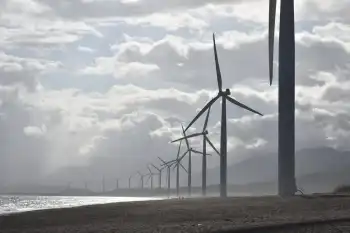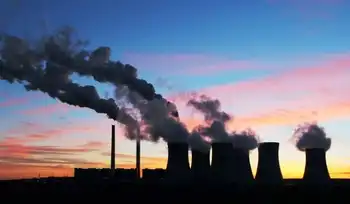The powerlessness of energy subsidies
OTTAWA, CANADA - Here's a puzzling set of facts.
First, federal energy subsidies in the U.S. more than doubled in the past nine years (from $8.1-billion [US] in 1999 to $16.6-billion in 2007).
Second, energy prices increased significantly (rising at a robust annual average rate of 8.2 per cent).
Third, energy consumption increased, too (rising at an annual average rate of 0.6 per cent).
Fourth, notwithstanding these three powerful market incentives, energy production didn't increase by a single iota - or, at least, not by any measurable part of an iota. Call it a 0.0 per cent increase.
All forms of energy production combined, the U.S. produced 72 quadrillion BTUs in 1999 and 72 quadrillion BTUs in 2007.
These facts make no obvious sense. Higher government energy subsidies are supposed to drive higher energy production. Higher energy prices are supposed to drive higher energy production. Higher energy consumption (demand) is supposed to drive higher energy production (supply).
These are truisms, assumptions routinely used to calculate energy production and consumption in coming years - and to justify government policy decisions now. The U.S. Energy Information Administration (EIA), in a comprehensive analysis of federal energy subsidies, noted that these assumptions embody "basic economic principles."
So what went wrong?
Why this decade-long suspension of basic economic principles?
For its part, the EIA offers two plausible explanations. First, federal and state governments had imposed extensive statutory limits on oil and natural gas exploration, effectively prohibiting any increase in domestic fossil fuel production. Second, widespread public confusion on environmental policy generally, and on U.S. greenhouse gas emissions specifically, induced companies to procrastinate in making energy investments.
In other words, according to the EIA, you won't get closer to your destination when you slam on the brakes - and don't know where you're going.
On the other hand, the EIA analysis suggests that government subsidies don't deliver the increased energy production that people expect from them. In its report, for example, the agency notes that Congress provides far more subsidies for renewable energy than for any other single category of energy - giving "renewables" one-third ($4.9-billion) of its energy "interventions" in 2007. It provides less than half as much ($2.1-billion) for oil and natural gas, less than one-quarter as much ($1.2-billion) for nuclear.
Because "renewables" provide essentially negligible quantities of energy, the subsidies that sustain them show a commensurate impact (that is, almost nil) on energy production.
For comparison purposes in production of electricity, the EIA converts the contribution of the various forms of energy into megawatt-hours and calculates the relationship between the different subsidies that Congress now gives to all these forms of energy.
Coal gets 44 cents per megawatt-hour. Oil and natural gas get 25 cents. Nuclear gets $1.59. Hydroelectric gets 67 cents. Wind gets $23.37. Solar gets $24.34. Yet, the EIA notes, wind and solar contribute "less than 1 per cent of total net [electricity] generation in the country" - even though production has tripled in the past three years.
The EIA conducted the same exercise with energy subsidies across the board, in this case using British thermal units. In this comparison, coal gets 4 cents in subsidies per million BTUs. Oil and natural gas get 3 cents. Refined coal - "synthetic fuel" - gets $1.35.
Ethanol, however, gets $5.72. Although already widely discredited as an alternative energy, ethanol still gets four times the federal support given to advanced forms of clean coal and more than 150 times the federal support given to fossil fuels, of which the U.S. has a 1,000 years (or more) of reserves.
Energy subsidies are a tricky business. Even the EIA doesn't want to scrutinize them too closely. The agency acknowledges that energy subsidies can merely facilitate "the transfer of wealth from the federal government to the beneficiaries [of the subsidies]."
Exactly how much energy production can be attributed to what subsidies? The EIA says this question was "outside the scope of this report."
Indeed.
Fossil fuel subsidies? Coal, oil and gas production will continue without them.
Alternative energy subsidies? Wind, solar and ethanol could well disappear - without altering energy production in any significant way.
Energy policy will probably determine who governs in the U.S. - and in Canada, too, for that matter - through the next decade.
In the U.S. election campaign, a simplistic (though dynamic) slogan now reverberates across the country: Drill here, drill now. When oil was cheap, it made sense for the U.S. to conserve its own oil reserves and to buy from abroad. It makes sense no longer.
Whether the country goes Republican or Democratic, the U.S. will soon be drilling again - and energy production will soon be increasing again.
In the Canadian election campaign, the respective party leaders appear strangely confident of their ability to know which alternative energies will prevail and strangely indifferent to the fact that these energies remain "alternatives" for the simple reason that they have never made it to market on their own power.
The real question is: Why not?
Related News

More pylons needed to ensure 'lights stay on' in Scotland, says renewables body
GLASGOW - Renewable energy in Scotland is being held back by outdated grid infrastructure, industry leaders said, as they warned new pylons and power lines are needed to "ensure our lights stay on".
Scottish Renewables said new infrastructure is required to transmit the electricity generated by green power sources and help develop "a clean energy future".
A new report from the organisation - which represents companies working across the renewables sector - makes the case for electricity infrastructure to be updated.
But it comes as electricity firms looking to build new lines or pylons face protests, with groups such as the Strathpeffer and…




